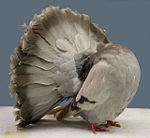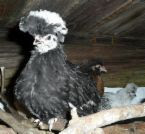
Barbados Blackbellies: a national treasure
I had the opportunity to visit Barbados on a trade mission with the Maryland Department of Agriculture. This small island, only 2½ times the size of our nation's capitol, with its idyllic weather and fantastic seaside scenery, quickly became one of my favorite places.
Geographically speaking, Barbados is the eastern most island in the Caribbean chain, the only, I was told, not to have developed from a volcano. As a former British colony, it is rich in the Queen's traditions. Barbadians speak "British" English, play cricket and drive on the "wrong" side of the road, just to note a few of their customs.
It goes without saying that Barbados is a popular tourist destination for Europeans, Americans, and Canadians, who go for rest and relaxation, to imbibe in the world's oldest rum and to eat flying fish, the national dish. But, while traveling around the island, tourists can't help but notice the abundance of "brown sheep" grazing in small pastures or tethered alongside the winding roads. In fact, most foreigners mistake these sleek, badger-faced animals for goats, when in reality, what they are seeing are Barbados Blackbellies, a hair sheep that is one of the most reproductive efficient breeds in the world and truly one of Barbados's "national treasures."
I had the opportunity to visit Barbados on a trade mission with the Maryland Department of Agriculture. This small island, only 2½ times the size of our nation's capitol, with its idyllic weather and fantastic seaside scenery, quickly became one of my favorite places.
Geographically speaking, Barbados is the eastern most island in the Caribbean chain, the only, I was told, not to have developed from a volcano. As a former British colony, it is rich in the Queen's traditions. Barbadians speak "British" English, play cricket and drive on the "wrong" side of the road, just to note a few of their customs.
It goes without saying that Barbados is a popular tourist destination for Europeans, Americans, and Canadians, who go for rest and relaxation, to imbibe in the world's oldest rum and to eat flying fish, the national dish. But, while traveling around the island, tourists can't help but notice the abundance of "brown sheep" grazing in small pastures or tethered alongside the winding roads. In fact, most foreigners mistake these sleek, badger-faced animals for goats, when in reality, what they are seeing are Barbados Blackbellies, a hair sheep that is one of the most reproductive efficient breeds in the world and truly one of Barbados's "national treasures."
The Barbados Blackbelly
The Barbados Blackbelly is an indigenous breed to Barbados. It descends from sheep brought to the islands from West Africa during the slave era. Blackbellies are "antelope like" in appearance, brown tan or yellow in color, with black points and under-parts. Both ewes and rams are should be polled or have only small scurs or diminutive horns. They may have some visible fuzzy wool undercoat within their hair coat, but it should shed along with the hair each year. White splotches or speckles on the shoulder, back or rump are permitted.
According to documented history of the breed, Barbados Blackbelly sheep should possess the following traits: 1) tolerance of hot and humid climates; 2) resistance to parasites; 3) resistance to foot problems; 4) a-seasonality of breeding; 5) high rate of twinning (but low rate of high multiples; 6) ease of lambing; and 7) lean carcass on a moderate-sized frame.
.jpg)


%5B1%5D.jpg)















It would be awesome to spend a holiday at Barbados. Specially at Colony Club Hotel.
ReplyDelete